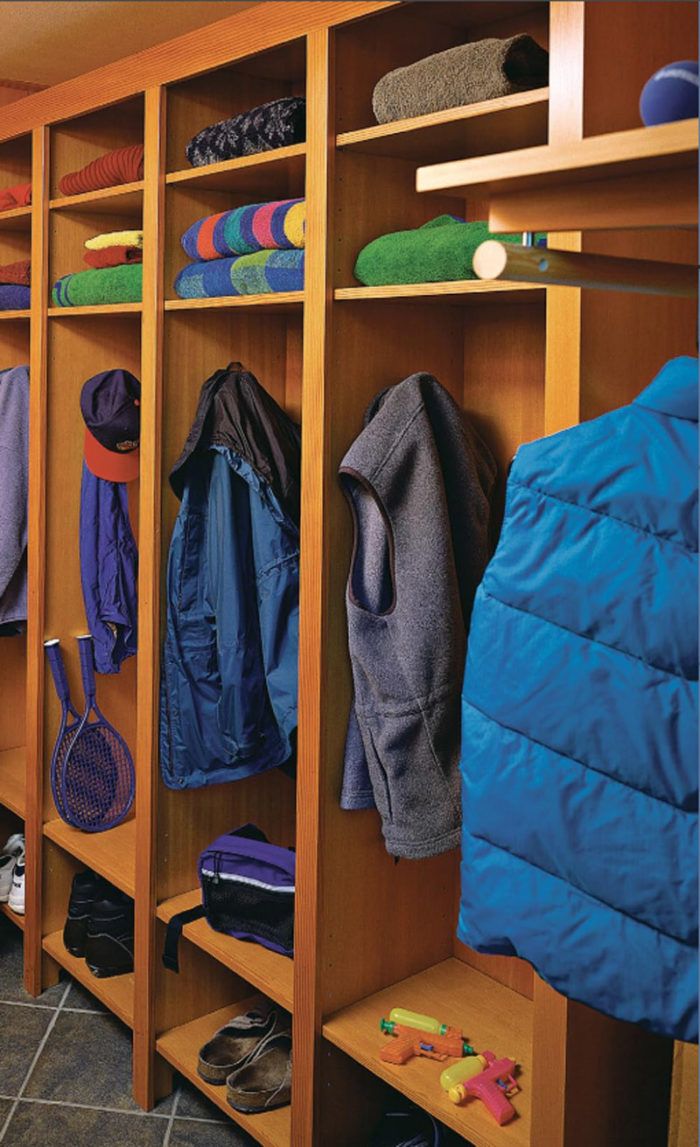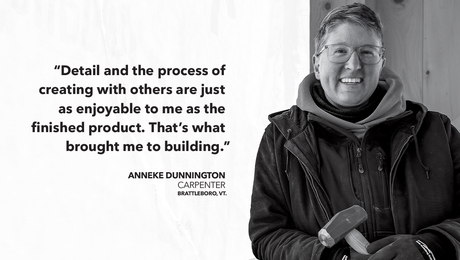Getting Serious About Mudrooms
These buffers keep out the elements while providing storage for everything from boots to backpacks.

Synopsis: No matter where you live, there’s a good chance that your house has a mudroom, and if it doesn’t, it should. Mudrooms are utility spaces that have to be rugged and easy to clean. They also need to provide lots of organized storage for coats, boots, hats, sports equipment, and anything else that comes in the back door. Scott Gibson interviews architects to find out their favorite details on floors, finishes, and cabinetry and includes input from Breaktime, our online discussion board.
A mudroom probably isn’t the first room you’d ask to see in an unfamiliar house. Easy to overlook unless you come in the back door, this utilitarian space would have a tough time competing for attention with a big kitchen or a master-bedroom suite. But trying to live without one is to invite inside all the mud, grit, and snow that Mother Nature can throw at you, along with the mountain of clutter that families usually accumulate.
Mudrooms can range from little more than an enlarged hallway with a few coat hooks and a bench to several hundred square feet of clothing and equipment storage, plus room to give the family pooch a bath. Their common purpose is to serve as a sort of way station from outside to inside, a place where you can shed your coat and shake off the rain before going in the house.
“The mudroom is a transition space,” says John Cole, an architect in Massachusetts and Maine. “It mediates between interior and exterior. It’s not the same as an outdoor space, and it’s not the same as an interior space, either. It has characteristics of each.”
Design a house without one? Not the architects I spoke with. Mudrooms know no real geographic boundaries, showing up in houses from Texas to Alaska. They serve a variety of purposes. “It’s just kind of an essential room to support family life, really,” says Seattle architect Peter Conard. “It’s where you take care of the business of everyday life.”
Size and location to suit the need
Mudrooms often wind up in the back of the house, becoming an informal entry between the garage or driveway and the kitchen. That’s the path most people typically follow, and having a mudroom along the way offers a measure of convenience.
Less frequently—in seasonal homes or where homeowners don’t feel the need for a formal entry—the mudroom can become the main entrance to a house.
In cold or wet climates, families collect a lot of outerwear—everything from heavy parkas and boots to raincoats—and mudrooms offer a dedicated place to stow this gear until it’s needed again. Children arriving home from school will be looking for a place to dump their backpacks. Sports-addicted families need room for hockey sticks, baseball gloves, skis, tennis rackets, and other gear.
And it’s not just clothing and gear. Mudrooms are used for storing recyclables like newspapers and aluminum cans, and for recharging batteries or cell phones.
Given the diversity of uses, one big mistake is making the mudroom too small, says Cole. “It’s almost like designing a good closet,” he says. “you have to understand what kind of wardrobe is being taken care of and what’s going to be a dressing ritual for an individual.” Or in this case, a family.
For more photos, information and floor plans for mudrooms, click the View PDF button below.


























